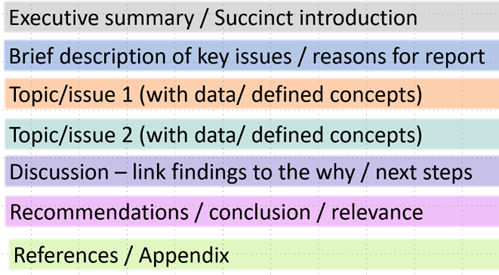
Writing reports
By Dana P Skopal, PhD
The workplace requires staff to communicate – both internally and externally – and a common format is reports. However, it seems many people do not like writing reports or even know how to start one.
First, how would you describe a report? There are many different types of reports – financial reports, board reports, research reports, technical reports, and the list goes on. No matter the subject matter of the report, an effective report means good planning with efficient writing processes and a document (and its message) that is clearly understood by its readers.
From the questions that we hear in our workshops, it appears that writers often do not clearly understand the purpose of the report and what the readers are looking for. Step back and think about what the reader needs to do with your data and findings. Do you need to convince them to act on your recommendations?
In the workplace you may need to use a report template, but as a writer you can guide your reader with a clear structure and effective headings / sub-headings. To write effectively, you need to know your key message that you want a reader to understand. Set aside time to plan by:
- clarifying the purpose of the document (to inform or persuade)
- understanding the readers’ requirements (who is the final reader?)
- organising the ideas logically, with clear headings
- placing key information first so a reader knows what they need to do.
Structuring your report is important. Here is an overview of report structures; adapt the structure or template to ensure your key message is not lost.

Effective report writing means knowing your material and articulating your main message in less than a page (ie Executive summary). Remember, you can include facts/ data to persuade your reader in logically ordered sections after stating your main message.
Copyright © Opal Affinity Pty Ltd 2023
